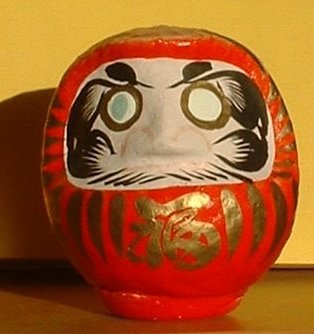What's the connection? Is there one?
Jundo mentioned a couple of times that his wife is an Aikido instructor, and I remember a few people in the Introductions thread saying that they were very into some martial art.
Did studying martial arts get you interested in Asian culture and serve as a jumping off point for sitting zazen?
I heard somewhere that Bodhidharma introduced martial arts to China from India. But I've also heard that his legs and arms atrophied and withered away during his years in the cave. Which leaves me with the mental image of Monty Python's Black Knight bellowing "Come back you yellow bastard, I'll bite your legs off!"
Come on, does this look like a kung-fu master to you?

Jundo mentioned a couple of times that his wife is an Aikido instructor, and I remember a few people in the Introductions thread saying that they were very into some martial art.
Did studying martial arts get you interested in Asian culture and serve as a jumping off point for sitting zazen?
I heard somewhere that Bodhidharma introduced martial arts to China from India. But I've also heard that his legs and arms atrophied and withered away during his years in the cave. Which leaves me with the mental image of Monty Python's Black Knight bellowing "Come back you yellow bastard, I'll bite your legs off!"
Come on, does this look like a kung-fu master to you?




Comment